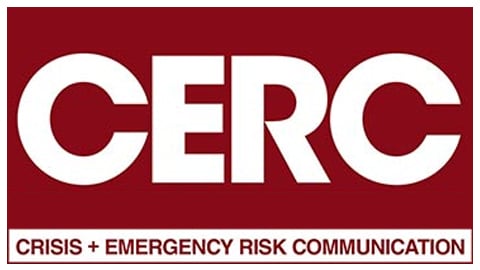What to know
The CERC manual provides an evidence-based framework and recommended practices for anyone who communicates on behalf of an organization responding to major emergencies such as natural disasters.

CERC Manual Chapters
Introduction to Crisis and Emergency Risk Communication (CERC)
This chapter describes the core Crisis and Emergency Risk Communication principles and how they apply to each phase of a crisis. Last updated 2018.
This chapter describes how people process information differently during a crisis, psychological barriers to receiving information, and how to incorporate what we know into strategies for communicators. Last updated 2019.
This chapter describes different ways to consider your audiences' needs, the factors that can influence their understanding and acceptance of your messages, and how communicators can tailor their messages for different audiences. Last updated 2018.
This chapter describes how to identify and engage with communities who are affected by crises and promote active community participation in responses. Last updated 2018.
This chapter describes how to develop and implement a crisis communication plan. Last updated 2014.
This chapter describes the role of a spokesperson in communicating during crises and emergencies and provides recommendations on practices for spokespersons. Last updated 2014.
This chapter describes the media's role in a crisis and recommended practices for facilitating positive relationships with the media. Last updated 2014.
